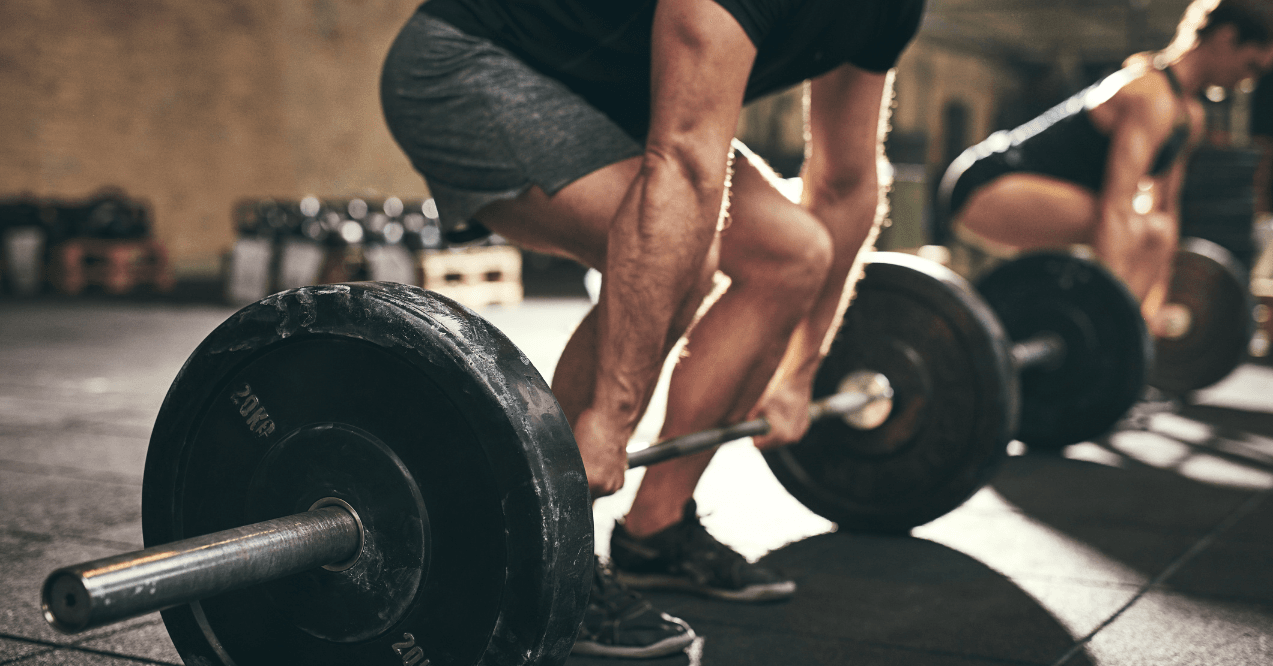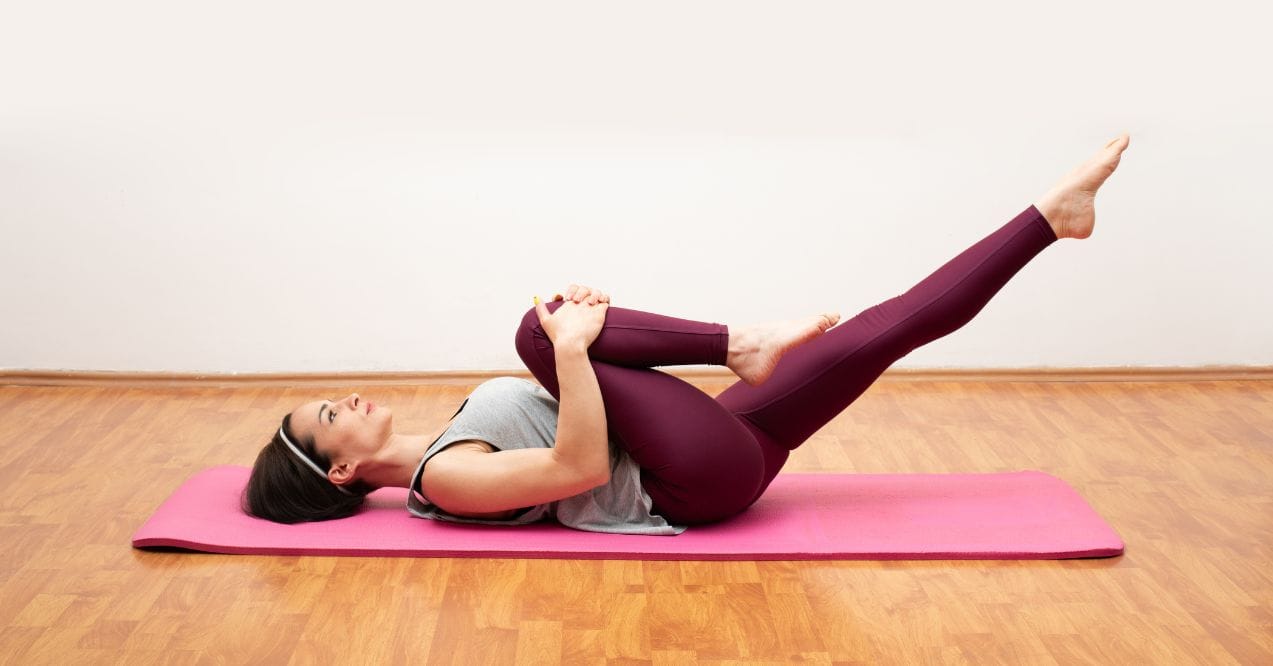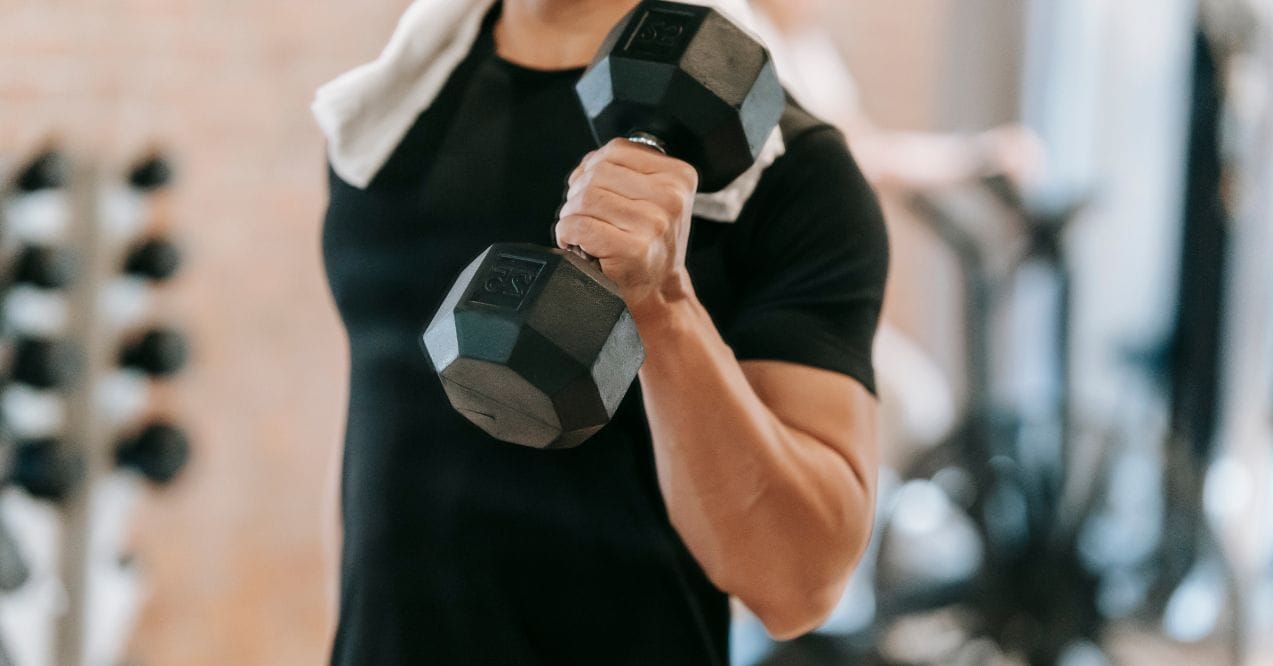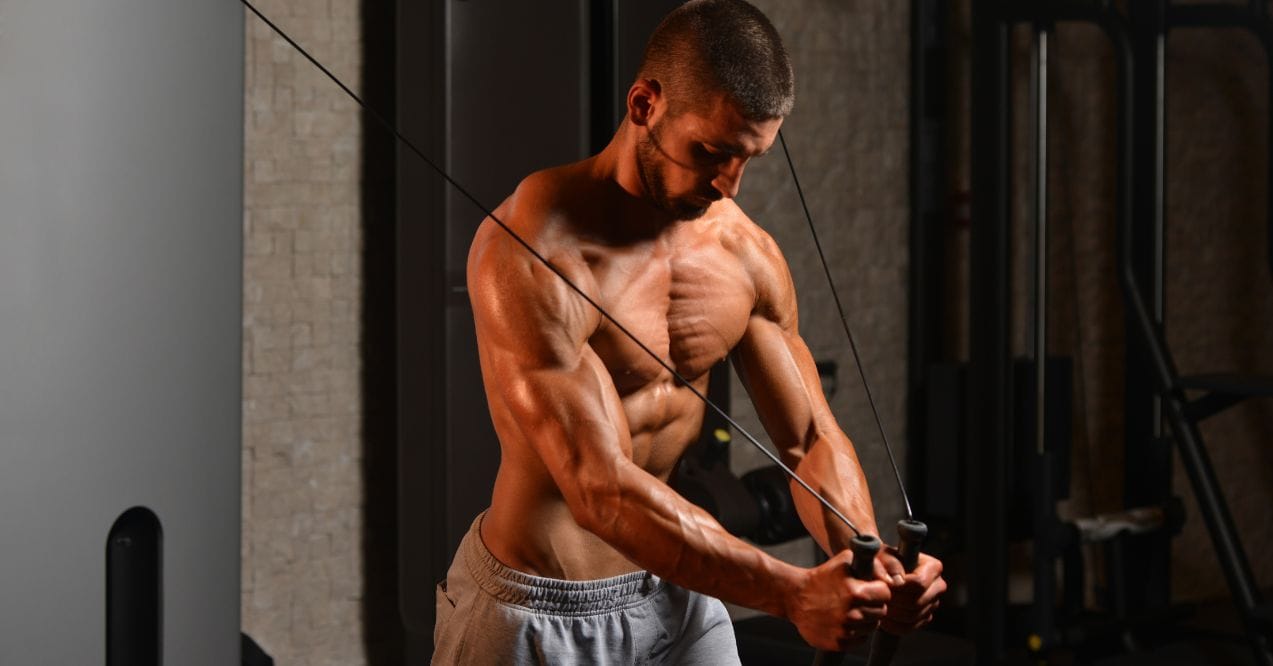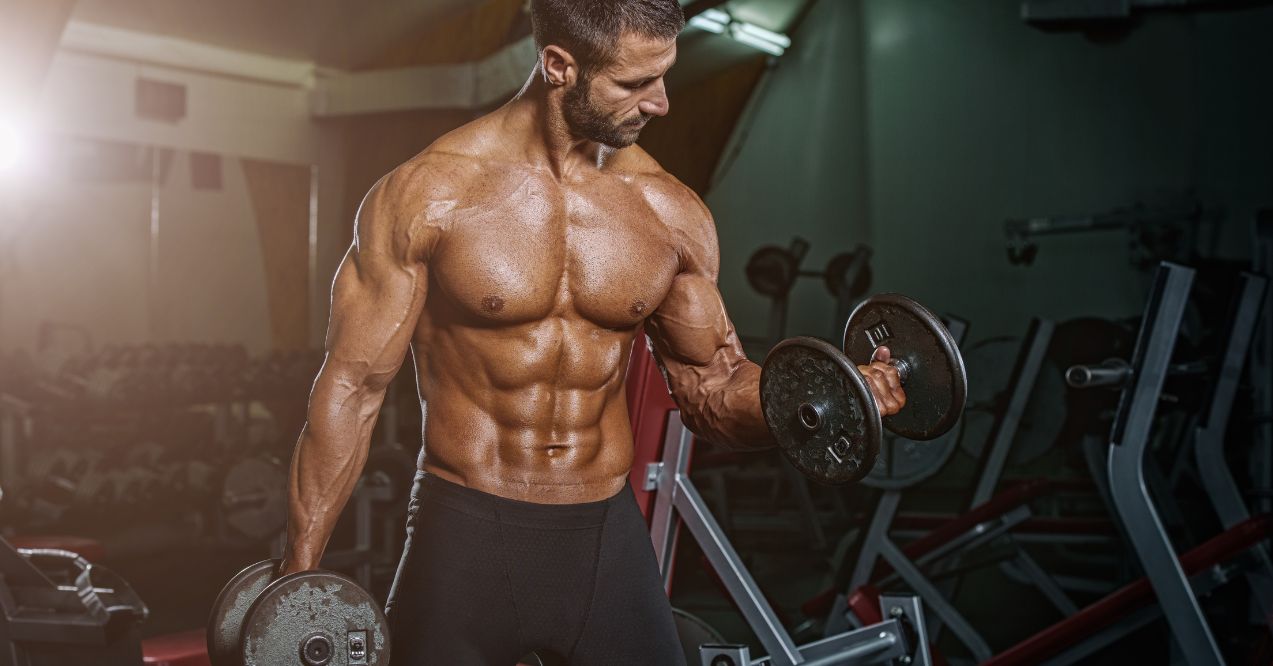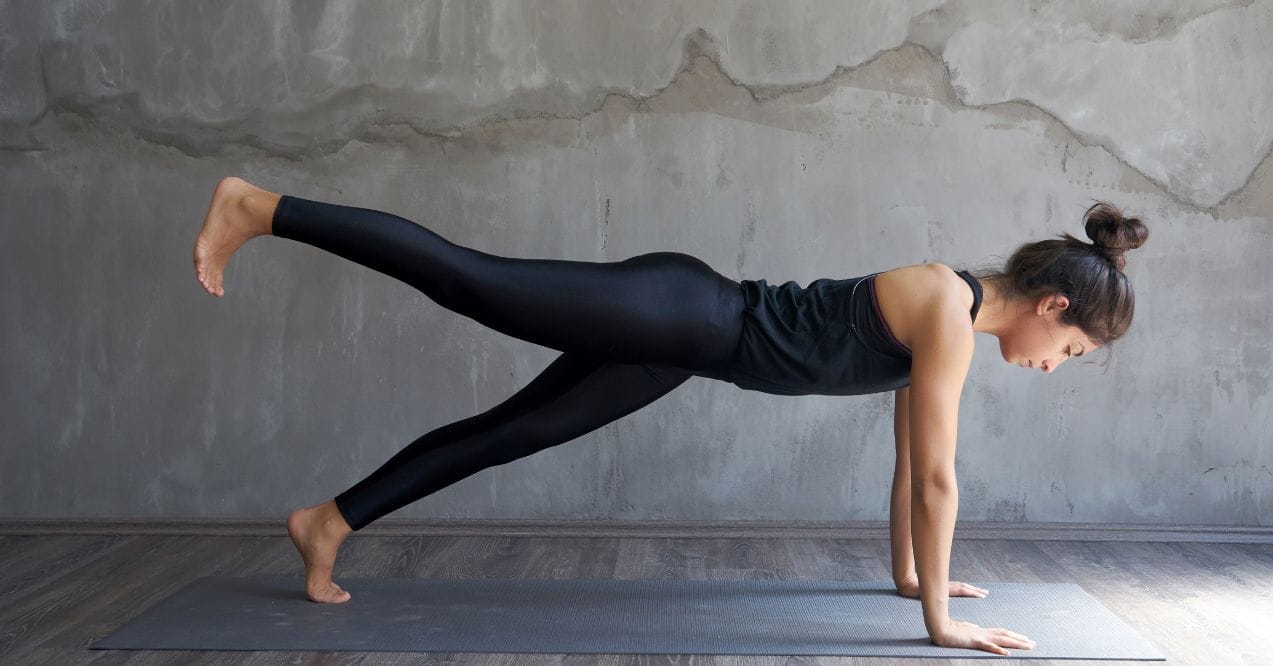Discover the Best Workout Split for Muscle Gain
Finding the best workout split for muscle gain can feel like solving a complex puzzle. A well-designed training split helps organize your workouts effectively while maximizing your progress in the gym. Whether you’re new to strength training or looking to level up your routine, the right split makes all the difference in achieving your muscle-building goals – and programs like the 28 Day Calisthenics Challenge can provide the structure and consistency needed to see real results.

What Is A Workout Split?
A workout split structures your training by dividing exercises across different days based on muscle groups or movement patterns. This strategic approach helps you train with sufficient intensity while giving each muscle group adequate recovery time.
The most effective splits match your schedule and recovery capacity. A thoughtfully designed split prevents overtraining specific muscles while keeping others undertrained. It creates a framework for tracking progress and adjusting your training load over time.
How Many Sets per Muscle Group per Week Should You Do?
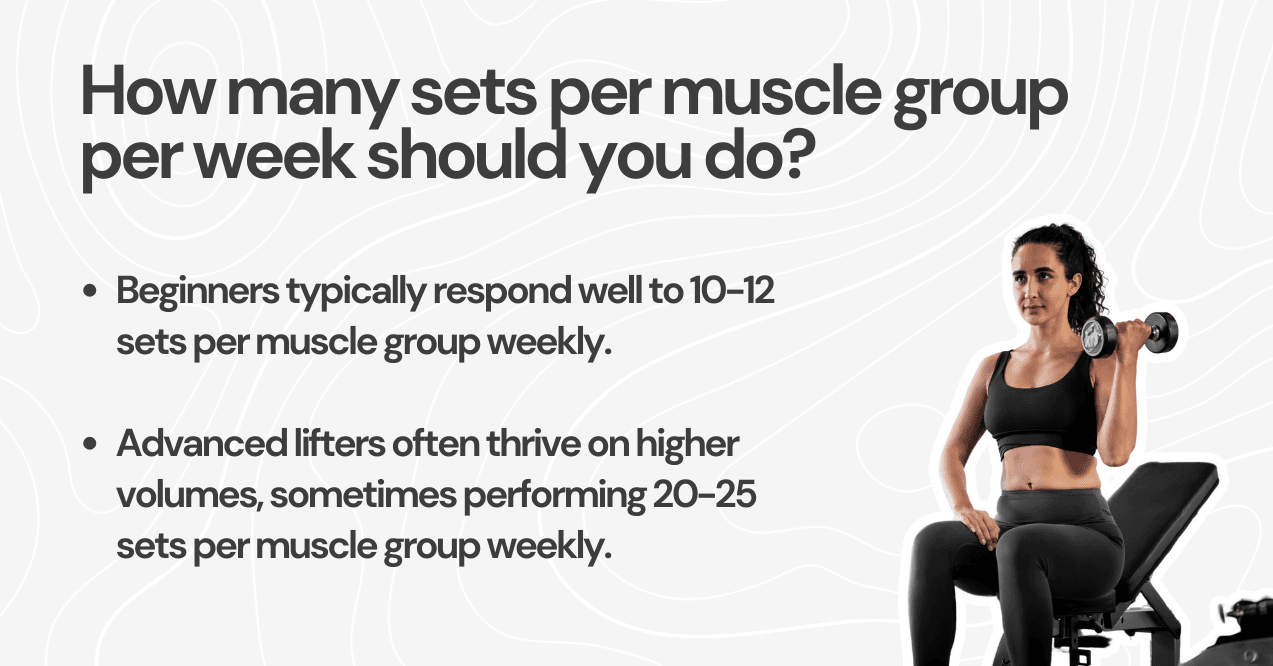
The optimal number of sets depends largely on your training experience. How many sets per muscle group per week you perform impacts your results significantly.
Beginners typically respond well to 10-12 sets per muscle group weekly. This volume allows for proper form development and base strength building without excessive fatigue. As you progress, you can gradually increase to 15-20 sets per week.
Advanced lifters often thrive on higher volumes, sometimes performing 20-25 sets per muscle group weekly. However, this depends heavily on:
- Individual recovery capacity
- Sleep quality and stress levels
- Nutrition and overall lifestyle factors
- Training intensity and exercise selection
At higher volumes and intensities, it’s common to experience a pronounced muscle pump during and after workouts. Understanding how long does a muscle pump last can give insight into your training effectiveness and help you better plan your rest, nutrition, and recovery routines.
How Often Should You Workout Per Week?
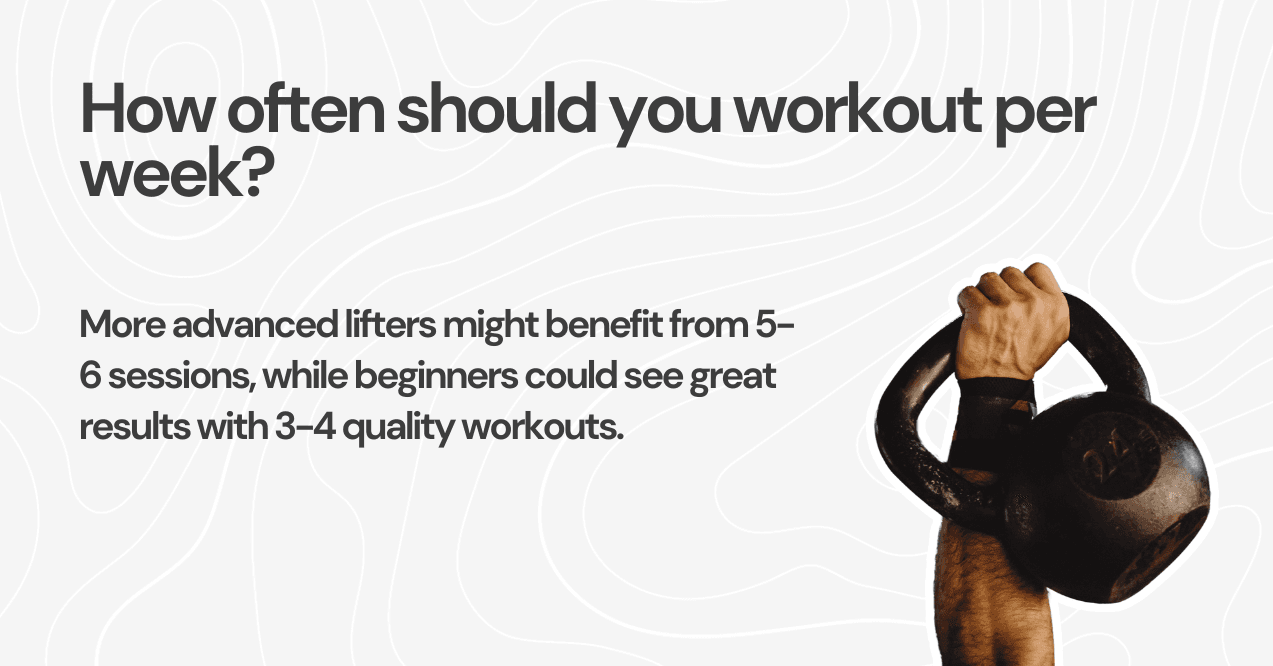
Your optimal training frequency balances stimulus and recovery. For most people pursuing muscle growth, 4-6 sessions per week works well. This allows enough volume for progress while preventing burnout.
A 4 day lifting split provides an excellent foundation for most lifters. It offers enough training stimulus while leaving time for recovery and life commitments. More advanced lifters might benefit from 5-6 sessions, while beginners could see great results with 3-4 quality workouts.
Signs you’re training at the right frequency include:
- Consistent energy levels throughout your sessions
- Progressive strength improvements
- Adequate recovery between workouts
- Sustainable adherence to your schedule
Best Workout Split for Muscle Gain
The push pull leg split stands out as one of the best workout splits for muscle gain. This ppl workout system divides training into three main movement patterns, allowing focused intensity while providing adequate recovery time.
A well-structured split helps you progress systematically. The best split for muscle growth typically includes:
- Clear exercise progression paths
- Balanced volume across muscle groups
- Strategic rest periods between training sessions
- Flexibility to adjust based on recovery
Day 1
Your push day workout routine focuses on chest, shoulder, and tricep movements. This synergistic approach trains muscles that work together in pushing motions, maximizing your training efficiency.
Sample Push Day
Barbell Bench Press: 4 sets of 6-8 reps
- Primary compound movement for overall chest development
- Engages front deltoids and triceps as supporting muscles
- Lower rep range builds raw strength and muscle density
Overhead Press: 3 sets of 8-10 reps
- Develops shoulder strength and stability
- Works the entire deltoid complex
- Strengthens core stabilization during standing position
Incline Dumbbell Press: 3 sets of 10-12 reps
- Targets upper chest fibers
- Independent dumbbell work addresses strength imbalances
- Moderate rep range optimizes muscle growth
Lateral Raises: 3 sets of 12-15 reps
- Isolates middle deltoid heads for broader shoulders
- Higher reps promote muscle endurance and definition
- Maintains shoulder joint health through controlled movement
Tricep Pushdowns: 3 sets of 12-15 reps
- Isolates all three heads of the triceps
- Higher rep range pumps blood into the muscles
- Finishing movement that completes tricep development
For detailed chest and tricep exercises, explore our comprehensive chest and tricep workout guide for additional movement variations.
Day 2
A pull day workout emphasizes back and bicep development. This session targets pulling muscles through vertical and horizontal movements, creating a balanced approach to upper body development.
Sample Pull Workout
Barbell Rows: 4 sets of 6-8 reps
- Builds overall back thickness and strength
- Engages the entire posterior chain
- Heavy weight and lower reps develop power and muscle mass
Pull-Ups or Lat Pulldowns: 3 sets of 8-10 reps
- Focuses on vertical pulling strength
- Develops wide, flaring lats
- Strengthens grip and improves shoulder stability
Single-Arm Dumbbell Rows: 3 sets of 10-12 reps
- Addresses muscle imbalances between sides
- Allows natural body movement and full range of motion
- Targets middle back muscles with precision
Face Pulls: 3 sets of 12-15 reps
- Strengthens rear deltoids and upper back
- Improves posture and shoulder health
- Acts as preventive exercise for shoulder injuries
Bicep Curls: 3 sets of 12-15 reps
- Isolates biceps for direct arm growth
- Higher reps promote muscle fullness
- Perfect finishing exercise for arm development
Day 3
A solid leg day workout forms the foundation of any effective training split. Focus on compound movements that engage multiple muscle groups, stimulating both strength and size gains throughout your lower body. Also, don’t be shy to try out calisthenic leg workouts as well.
Sample Leg Workout
Back Squats: 4 sets of 6-8 reps
- Ultimate lower body compound movement
- Builds overall leg strength and muscle mass
- Increases natural hormone production for full-body growth
- Develops core stability and lower back strength
Romanian Deadlifts: 3 sets of 8-10 reps
- Targets posterior chain development
- Strengthens hamstrings and glutes effectively
- Improves hip mobility and flexibility
- Works lower back muscles isometrically
Walking Lunges: 3 sets of 12 steps each leg
- Develops unilateral leg strength
- Improves balance and coordination
- Targets all major leg muscles dynamically
- Adds functional strength for daily activities
Leg Press: 3 sets of 10-12 reps
- Allows heavy loading with reduced spinal stress
- Isolates leg muscles more than squats
- Perfect for adding volume after compound moves
- Helps reach muscle fatigue safely
Calf Raises: 4 sets of 15-20 reps
- Develops often-neglected calf muscles
- Higher reps promote muscle endurance and growth
- Essential for balanced leg development
- Improves ankle stability
Day 4
The fourth training day offers flexibility in your routine, allowing personalization based on your specific needs and goals. This strategic approach helps maintain steady progress while preventing plateaus.
Consider these approaches
Target lagging muscle groups
- Add volume to underdeveloped areas
- Use isolation exercises for precise muscle targeting
- Focus on mind-muscle connection and form
- Perfect time for specialization techniques
Focus on mobility work
- Improves range of motion in key joints
- Reduces risk of future injuries
- Enhances recovery between heavy sessions
- Allows better performance in main lifts
Incorporate light cardio
- Promotes active recovery
- Improves workout capacity
- Supports healthy heart function
- Aids in nutrient delivery to muscles
Perform a somatic workout plan for active recovery
- Enhances body awareness and control
- Reduces muscle tension and stress
- Improves movement patterns
- Supports long-term training sustainability
This adaptable day helps maintain progress while preventing plateaus. Adjust its intensity based on your recovery status and goals. Listen to your body and choose activities that complement your main training days while supporting overall progress.
How Important Is Nutrition for Gaining Muscle?
Your nutrition strategy plays a vital role in supporting muscle growth. While training provides the stimulus, food supplies the building blocks for recovery and growth.
Protein forms the foundation of your nutritional approach. Aim for 1.6-2.2g per kg of body weight daily, spread across 4-5 meals. This spacing helps maintain a steady supply of amino acids for muscle repair and growth.
Complementing your protein needs, Trumeta Bone Broth Protein offers a unique advantage with its high collagen and glycine content. Its clean formula provides 20g of protein per serving without fillers or allergens, making it an excellent choice for supporting muscle recovery and growth.
Also consider adding Trumeta Creatine to your diet, because creatine supports strength gains and muscle performance. With its superior purity and 5g optimal dosing you are getting the most out of this performance supplement. Studies show it helps improve functional strength and workout performance across various exercises. Its pure formula dissolves easily and contains minimal byproducts compared to standard options.
For those interested in optimizing body composition while building muscle, explore our guide on what is body recomposition for detailed nutritional strategies.
Key nutritional factors:
- Total caloric intake aligned with your goals
- Balanced macronutrient distribution
- Strategic meal timing around workouts
- Consistent hydration throughout the day
Quality carbohydrates fuel your training sessions and support recovery:
- Whole grains
- Potatoes and sweet potatoes
- Rice varieties
- Fruits and vegetables
Healthy fats support overall health. Focus on:
- Olive oil
- Nuts and seeds
- Avocados
- Fatty fish

Conclusion
The best workout spit for muscle gain balances effective training stimulus with adequate recovery time. Whether you choose a push pull leg split or a 4 day lifting split, consistency and progression matter most.
Start with a structure that fits your schedule and experience level. Track your progress and adjust based on your results.
Focus on:
- Following a structured progression plan
- Maintaining proper form on all exercises
- Getting adequate sleep and recovery
- Supporting your training with proper nutrition
As you gain experience, you’ll learn to fine-tune your split based on your body’s response. Stay patient and trust the process – significant muscle growth takes time and dedication.
Both have their place in muscle building. Free weights engage more stabilizer muscles and offer functional strength gains. Machines provide controlled movements ideal for isolation exercises and help maintain proper form during heavy lifts.
The push/pull/legs (PPL) split typically works best for muscle gain. It allows adequate volume per muscle group while providing proper recovery time between sessions. A 4-6 day training frequency maximizes growth stimulus and recovery balance.
Optimal workout length is 45-60 minutes of focused training. This timeframe allows enough volume for muscle stimulation while preventing excessive fatigue. Beyond this duration, exercise quality often decreases and stress hormones may increase.
Advertisement. This site offers health, wellness, fitness and nutritional information and is designed for educational purposes only. You should not rely on this information as a substitute for, nor does it replace, professional medical advice, diagnosis, or treatment. If you have any concerns or questions about your health, you should always consult with a physician or other health-care professional. Do not disregard, avoid or delay obtaining medical or health related advice from your health-care professional because of something you may have read on this site. The use of any information provided on this site is solely at your own risk.
